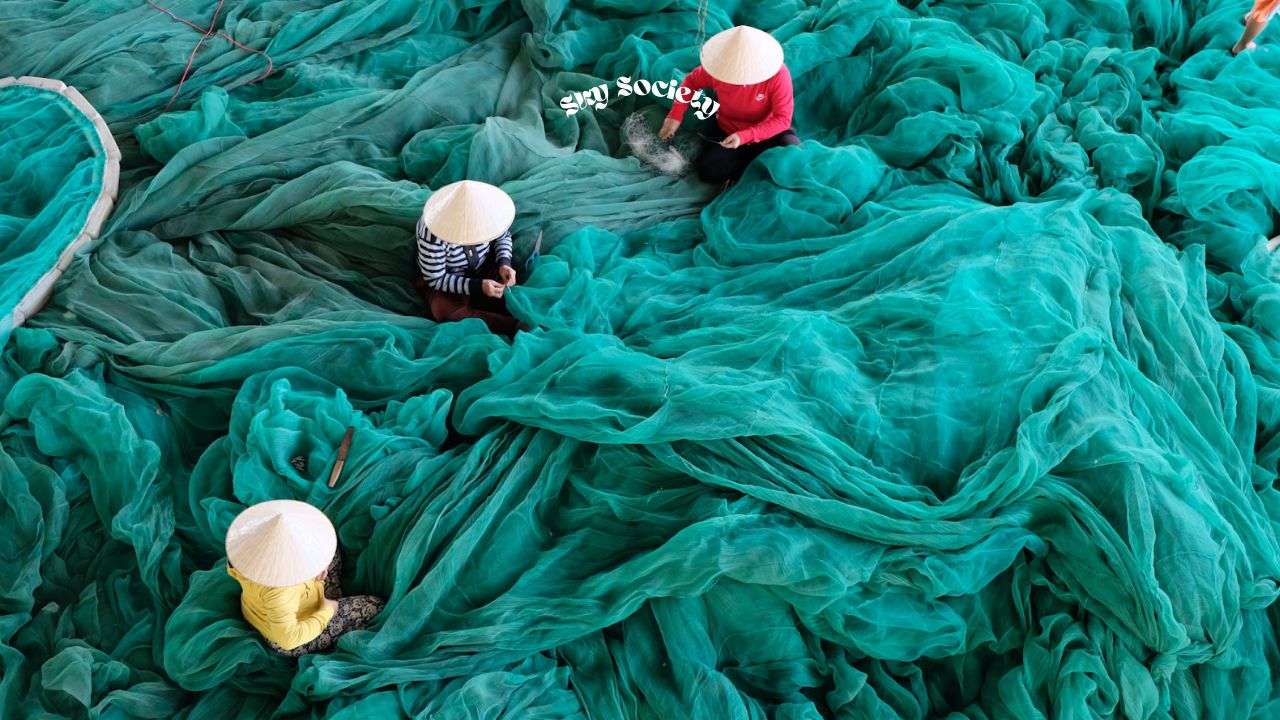Deadstock is the Future of Circular Fashion and Here's 5 Reasons Why
Jan 27, 2023
There’s been a lot of talk in the fashion world recently about deadstock fabric.
If you’re not familiar with deadstock, it’s leftover fabric that ends up in landfills or incinerated. But what does this mean for the future of fashion?
Circular fashion asks the fashion industry to create more consciously. By creating clothing that values longevity and sustainability, there is less waste and pollution.
Here’s 5 reasons why deadstock fabric is the future of circular fashion.

But, before we get started….
Did you know the term “circular fashion” was coined by Anna Brismar, owner of Green Strategy, a global consultancy.
Brismar thought the term best describes a circular textile system that addresses how innovating textile design can eliminate waste and pollution. Circular fashion values the 4 Rs.
Reduce, Rewear, and Repurpose
While fast fashion has adopted a linear model of ‘take, make, waste’ that designs products to be disposed of after a few uses, circular fashion has paved a new way.
Well maybe not new…. In the 1800s, clothing was made in homes or from local dressmakers.
The clothing took a lot longer to make because the materials had to be sourced, fabric cut, and sewn to proper measurements.
Even just a few decades ago, upcycling was a popular way to use old textiles. In the past 20 years we’ve seen a major rise in fast fashion.
Today, clothing manufacturers produce 10 times more textile waste each year than in 1960. The average American throws away 82 pounds of clothing every year.
The United States alone produces an estimated 11.3 million tons of textile waste annually.
Circular fashion designs waste and pollution out of the equation so that materials are used for as long as possible.
Here’s 5 reasons why deadstock fabric is the future of circular fashion.
1. Less textile waste
Unused fabric from mills and factories is a sustainable alternative to producing more textiles. This fabric, also known as deadstock, can be salvaged and upcycled into new designs.
This keeps textiles out of the landfills for longer.
Globally, 100 billion garments are produced each year. 92 million tonnes of textile waste end up in landfills yearly. It takes 2,700 liters of water to produce one cotton t-shirt.
Deadstock is an opportunity for the fashion world. According to Queen of Raw, a global marketplace for deadstock, one yard of deadstock fabric saves 700 gallons of water.
2. Reduces carbon emissions
There is currently over $120 billion in excess textiles sitting in warehouses around the world waiting to be sent to landfills or incinerated. The fashion industry as a whole is responsible for 10% of the world's carbon emissions.
Besides being extremely wasteful of resources, fast fashion is very damaging to the environment. Most of the clothing we wear will take hundreds of years to decompose.

Deadstock is a more sustainable option for fashion retailers because it increases the life cycle of textiles and reduces carbon footprint.
Since deadstock is fabric that’s already been made, there’s a significant decrease in carbon emissions when producing garments from deadstock fabric.
3. It’s cheaper!
Deadstock is an especially great option if you’re a small business looking to make it in the fashion world! Deadstock is significantly cheaper than new fabric. It reduces production time and volume of resources needed to make the clothing.
In other words, you can save a ton of money without the extra tonnes… (Pun intended!). Deadstock fabric is a cost-effective way to make your business more sustainable!
4. It’s trending
Historically, there has been no way to know where one can find and buy deadstock. But we have great news, deadstock fabric is trending!
There are many companies out there that are sourcing deadstock and selling it online.

Nona Source, a luxury fabric resale platform, has brought deadstock fabric to the world of high fashion. Nona Source gets their deadstock from the most exclusive French Maisons de Couture.
The company sells its deadstock up to 70% off wholesale prices. Along with Nona Source, other companies like Queen of Raw, Fabcycle, Reformation, Christy Dawn, and OhSevenDays are all paving the way for a more circular fashion world with deadstock fabric as the star.
5. It’s time for us to consume differently

The fast fashion industry prioritizes fast and cheap production above all else. Brands nowadays make thousands of garments each month to keep up with demand.
As fast fashion brands race to find the next style and make it even faster, we as consumers need to think about how we consume. The styles we’re consuming aren’t meant to last.
Fast fashion clothing relies on cheap synthetic fabrics that get worn out after just a few washes.
Less demand for fast fashion means less production. The circular fashion industry can only evolve if we as consumers demand it.
Brands need to dismantle and rebuild their business models to be less linear and more circular. But that begins with us, the consumers.
✍️ Written by Nimra Karamat
Join 10K Women in Marketing
Women in Marketing LinkedIn Group
A private community where young women in marketing network, collaborate, and support each other.
GOOD STUFF ONLY
The Sky Society Weekly Edit
Signup for our weekly newsletter for:
✨ New entry-level marketing jobs
✨ Marketing tips and tea
✨ Resume and portfolio resources
✨ Invites to exclusive events
We hate SPAM. We will never sell your information, for any reason.









